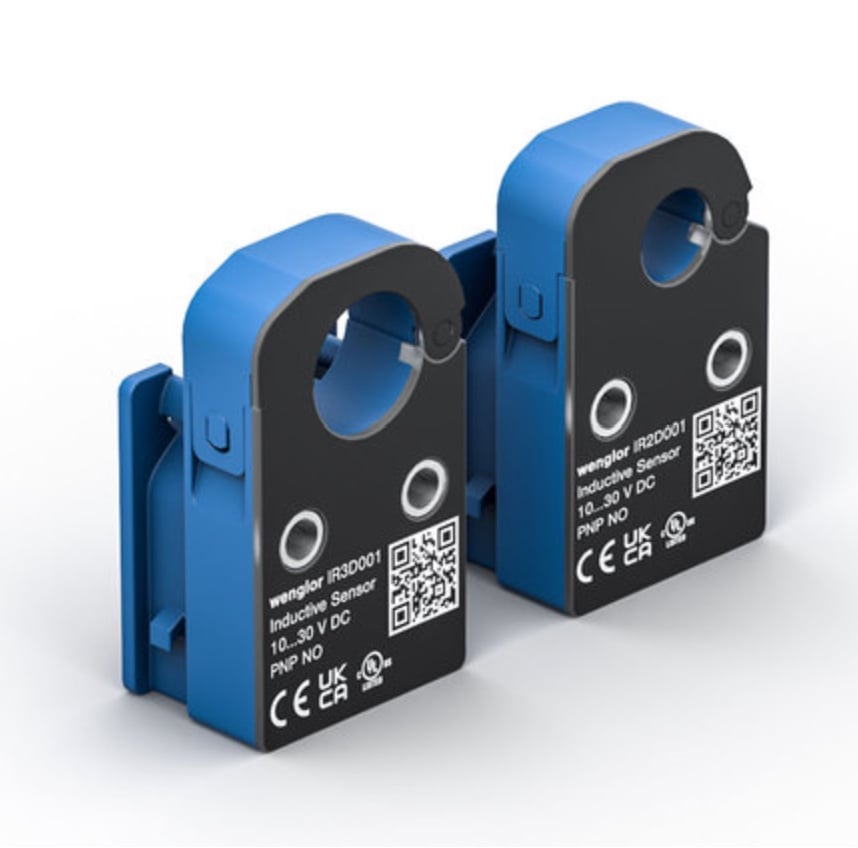Wenglor’s Inductive Ring Sensors Ready for Robotic Metallic Parts Feeding Applications
Wenglor’s new inductive ring sensors promise easy mounting and faster, more accurate parts counting.
How Inductive Ring Sensors Work
Engineers and robotic system designers use inductive sensors to detect the presence of metal objects. When something metal moves past the sensor’s inductive coil, it changes its magnetic field, which generates a small current for the device to interpret. As its name suggests, a ring sensor’s coil wraps around whatever conduit is feeding parts to robotic and other assembly systems. Configured in this way, not only can inductive ring sensors be used to track and count metal parts, but they are also capable of detecting metallic contaminants in liquid processing flows.

Wenglor’s inductive ring sensors clamp directly onto the tubes feeding small metallic parts to robotic manufacturing systems. Image used courtesy of Wenglor
One of the key advantages of inductive sensors is that they are virtually maintenance-free. With no moving parts and solid-state electronics protected from the elements, according to Wenglor, the class IP54 devices have no wear surfaces to impact the performance or service life of the sensor.
Static and Dynamic Sensors From Wenglor
Wenglor sensors come in four models offering two inner diameters and two sensor types (static and dynamic). Wenglor’s sensors are capable of detecting objects as small as 2.5 mm or 3 mm depending on the specific model.
Consisting of two coil parts housed in a hinged plastic ring, the sensor is designed for easy mounting. The induction coil’s ring opens up so that it can be clamped onto the feeding tube and features a tightening strap designed to clamp firmly without restricting parts flow. The device also features a single power and data cable that plugs into the sensor reducing complexity and the space required to mount the sensor.

Wenglor’s new inductive ring sensors offer a single power/data cable that can be run parallel to the feeding tube on installation. Image used courtesy of Wenglor
Tracking Fasteners Faster
The most common inductive ring sensor application generally involves tracking small fasteners supplied to a machine. Imagine a robot or similar system performing small assembly operations, like riveting parts together. The speed at which this machine can operate depends on several factors but often relies on how fast rivets are fed to the robot’s tooling. Many feeding systems use compressed air to propel parts through the feeding tube. According to Wenglor, a strategically placed inductive sensor can count and track rivet feed more accurately and at higher speeds.





